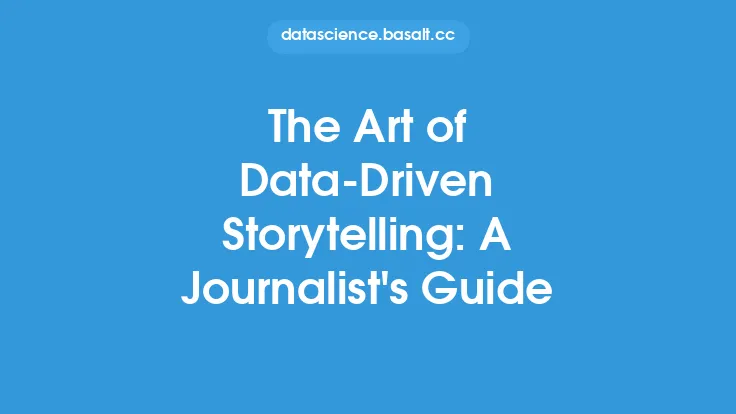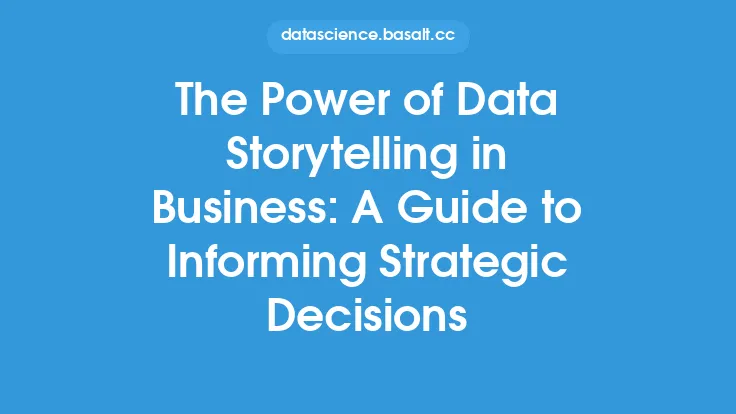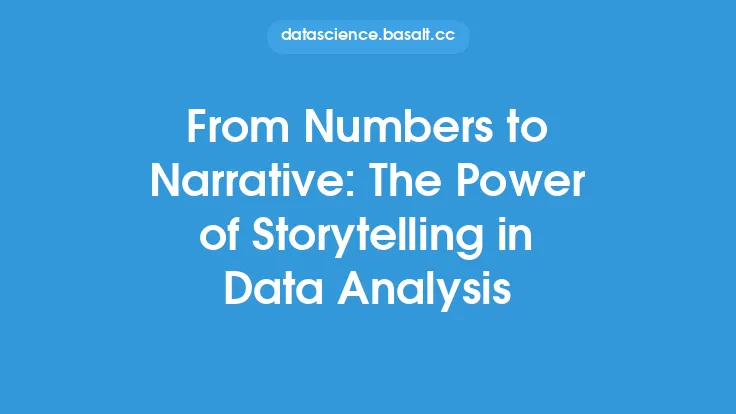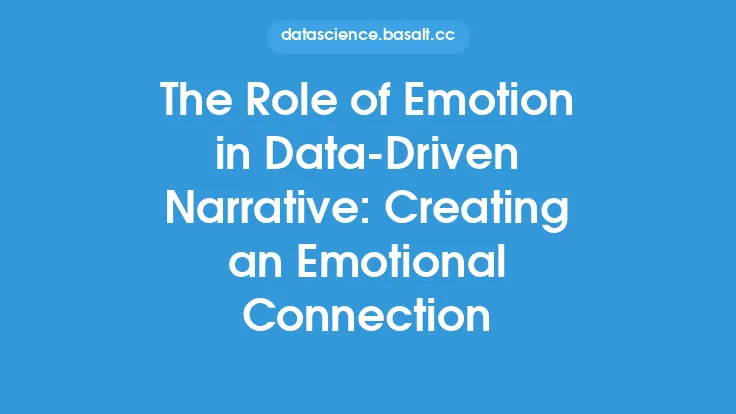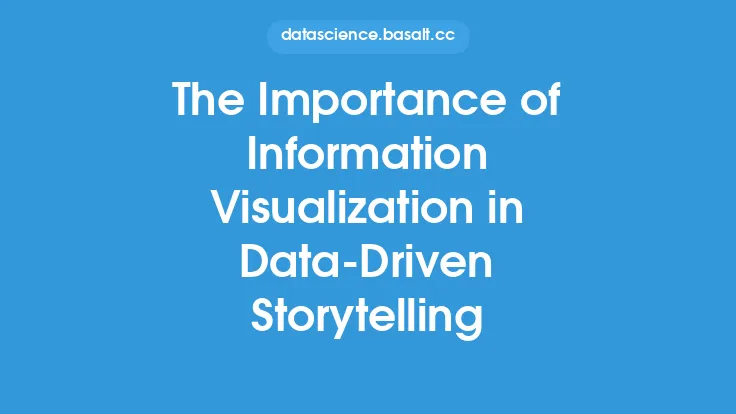In today's data-driven world, the ability to tell compelling stories with data is a highly sought-after skill. Data-driven narrative is a powerful tool that allows individuals and organizations to communicate complex information in a clear and engaging manner. By leveraging data-driven narrative techniques, storytellers can create immersive and interactive experiences that capture their audience's attention and convey meaningful insights. At its core, data-driven narrative is about using data to tell a story that resonates with people, rather than simply presenting facts and figures.
Introduction to Data-Driven Narrative Techniques
Data-driven narrative techniques involve using data visualization, statistical analysis, and storytelling principles to create a narrative that is both informative and engaging. This approach requires a deep understanding of the data, as well as the ability to identify key trends, patterns, and insights that can be used to tell a compelling story. Data-driven narrative techniques can be applied to a wide range of fields, including business, healthcare, education, and social sciences. By using data-driven narrative techniques, individuals and organizations can create stories that are grounded in evidence, yet still manage to capture the imagination and emotions of their audience.
The Importance of Data Quality and Preparation
Before creating a data-driven narrative, it is essential to ensure that the data is of high quality and properly prepared. This involves cleaning, transforming, and formatting the data to make it suitable for analysis and visualization. Data quality issues, such as missing or duplicate values, can significantly impact the accuracy and reliability of the narrative. Therefore, it is crucial to invest time and effort in data preparation to ensure that the data is accurate, complete, and consistent. Additionally, data preparation involves selecting the most relevant and meaningful data points to include in the narrative, as well as identifying potential biases and limitations that may impact the story.
Data Visualization and Storytelling
Data visualization is a critical component of data-driven narrative, as it allows storytellers to communicate complex information in a clear and concise manner. Effective data visualization involves using a range of techniques, including charts, graphs, maps, and interactive visualizations, to create a visual narrative that supports the story. The choice of visualization technique depends on the type of data, the story being told, and the audience being targeted. For example, a bar chart may be used to compare categorical data, while a line graph may be used to show trends over time. Interactive visualizations, such as dashboards and simulations, can be used to create immersive and engaging experiences that allow the audience to explore the data in more detail.
Statistical Analysis and Modeling
Statistical analysis and modeling are essential tools for data-driven narrative, as they allow storytellers to identify patterns, trends, and relationships in the data. Statistical techniques, such as regression analysis and hypothesis testing, can be used to test assumptions and validate findings, while machine learning algorithms can be used to identify complex patterns and predict future outcomes. By applying statistical analysis and modeling to the data, storytellers can create a narrative that is grounded in evidence and supported by rigorous analysis. Additionally, statistical analysis and modeling can be used to identify potential biases and limitations in the data, which is critical for creating a reliable and trustworthy narrative.
Crafting a Compelling Narrative
Crafting a compelling narrative involves using a range of storytelling techniques, including character development, plot structure, and emotional appeal. In data-driven narrative, the characters are often the data points, and the plot structure involves using the data to tell a story that has a clear beginning, middle, and end. Emotional appeal is critical in data-driven narrative, as it allows storytellers to create a connection with their audience and convey the significance and impact of the findings. By using storytelling techniques, such as metaphors, analogies, and anecdotes, storytellers can create a narrative that is engaging, memorable, and impactful.
Best Practices for Data-Driven Narrative
To create effective data-driven narratives, storytellers should follow a range of best practices, including keeping the narrative simple and focused, using clear and concise language, and avoiding technical jargon and complex terminology. Additionally, storytellers should use interactive and immersive visualizations to create engaging experiences, and provide context and background information to help the audience understand the story. It is also essential to be transparent about the data and methods used, and to acknowledge potential limitations and biases. By following these best practices, storytellers can create data-driven narratives that are informative, engaging, and impactful.
Common Challenges and Pitfalls
Despite the many benefits of data-driven narrative, there are several common challenges and pitfalls that storytellers should be aware of. One of the most significant challenges is ensuring that the data is accurate and reliable, as errors or biases in the data can significantly impact the narrative. Additionally, storytellers should be aware of the potential for misinterpretation or misrepresentation of the data, and take steps to prevent this from occurring. Other challenges include dealing with complex or ambiguous data, managing stakeholder expectations, and balancing the need for simplicity and clarity with the need for technical accuracy and detail. By being aware of these challenges and pitfalls, storytellers can take steps to mitigate them and create effective data-driven narratives.
Future Directions and Emerging Trends
The field of data-driven narrative is rapidly evolving, with new technologies and techniques emerging all the time. Some of the most significant emerging trends include the use of artificial intelligence and machine learning to automate data analysis and visualization, the development of new interactive and immersive visualization tools, and the increasing importance of storytelling and narrative in data science and analytics. Additionally, there is a growing recognition of the need for diversity, equity, and inclusion in data-driven narrative, and for the importance of considering the social and cultural context in which the narrative is being told. By staying up-to-date with these emerging trends and technologies, storytellers can create data-driven narratives that are innovative, engaging, and impactful.
